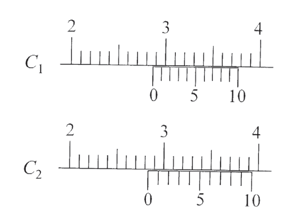In the determination of Young's modulus by using Searle's method, a wire of length L = 2m and diameter d = 0.5 mm is used. For a load M = 2.5 kg, an extension mm in the length of the wire is observed. Quantities d and ℓ are measured using a screw gauge and micrometer, respectively. They have the same pitch of 0.5mm. The number of divisions on their circular scale is 100. The contributions to the maximum probable error of the Y measurement
Important Questions on Units and Measurements
Two parameters and are measured experimentally and used to determine a quantity given by . If the percentage errors in the measurement of and are respectively and , the percentage error in the measurement of is
Area of the cross-section of a wire is measured using a screw gauge. The pitch of the main scale is . The circular scale has divisions and for one full rotation of the circular scale, the main scale shifts by two divisions. The measured readings are listed below.
| Measurement condition | Main scale reading | Circular scale reading |
| Two arms of gauge touching each other without wire | division | divisions |
| Attempt-: With wire | divisions | divisions |
| Attempt-: With wire | divisions | divisions |
What are the diameter and cross-sectional area of the wire measured using the screw gauge?
The density of the material of a cube can be estimated by measuring its mass and the length of one of its sides. If the maximum error in the measurement of mass and length are and respectively, the maximum error in the estimation of the density of the cube is approximately:
There are two vernier calipers both of which have divided into equal divisions on the main scale. The Vernier scale of one of the calipers has equal divisions that correspond to main scale divisions. The Vernier scale of the other caliper has equal divisions that correspond to main scale divisions. The readings of the two calipers are shown in the figure. The measured values (in ) by calipers and respectively, are

| S.No. | MS (cm) | VS divisions |
| 1. | 0.5 | 8 |
| 2. | 0.5 | 4 |
| 3. | 0.5 | 6 |
If the zero error is - 0.03 cm, then mean corrected diameter is:

